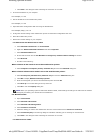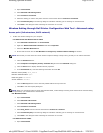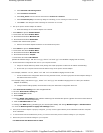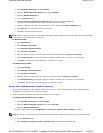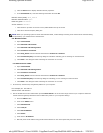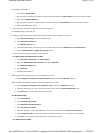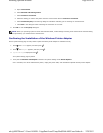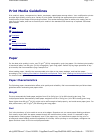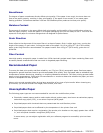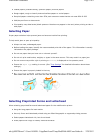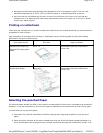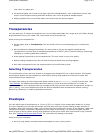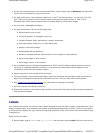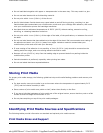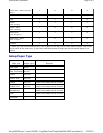
Smoothness
The degree of paper smoothness directly affects print quality. If the paper is too rough, the toner does not
fuse to the paper properly, resulting in poor print quality. If the paper is too smooth, it can cause paper
feeding problems. Smoothness between 150 and 250 Sheffield points produces the best print quality.
Moisture Content
The amount of moisture in the paper affects both print quality and the ability of the multifunction printer to
feed the paper properly. Leave the paper in its original packaging until you are ready to use it. This limits the
exposure of the paper to moisture changes that can degrade its performance.
Grain Direction
Grain refers to the alignment of the paper fibers in a sheet of paper. Grain is either grain long, running the
length of the paper, or grain short, running the width of the paper. For 60 to 135 g/m
2
(16 to 36 lb bond)
paper, grain long fibers are recommended. For papers heavier than 135 g/m
2
(36 lb bond), grain short is
preferred.
Fiber Content
Most high-quality xerographic paper is made from 100% chemically pulped wood. Paper containing fibers such
as cotton possess characteristics that can result in degraded paper handling.
Recommended Paper
To ensure the best print quality and feed reliability, use 75 g/m
2
(20 lb) xerographic paper. Business papers
designed for general business use also provide acceptable print quality. Only use paper able to withstand high
temperatures without discoloring, bleeding, or releasing hazardous emissions. The laser printing process heats
paper to high temperatures. Check with the manufacturer or vendor to determine whether the paper you have
chosen is acceptable for laser printers.
Always print several samples before buying large quantities of any type of print media. When choosing any
print media, you should consider the weight, fiber content, and color.
Unacceptable Paper
The following paper types are not recommended for use with the multifunction printer:
z Chemically treated papers used to make copies without carbon paper, also known as carbonless papers,
carbonless copy paper (CCP), or no carbon required (NCR) paper
z Preprinted papers with chemicals that may contaminate the multifunction printer
z Preprinted papers that can be affected by the temperature in the printer fuser unit
z Preprinted papers that require a registration (the precise print location on the page) greater than ±0.09
in., such as optical character recognition (OCR) forms
In some cases, you can adjust registration with your software program to successfully print on these
forms.
Page
2
of
9
Print Media Guidelines
2/
29/
2012
mk:@MSITStore:C:\Users\14JMIS~1\AppData\Local\Temp\Rar$DIa0.409\UsersGuide.ch
...



